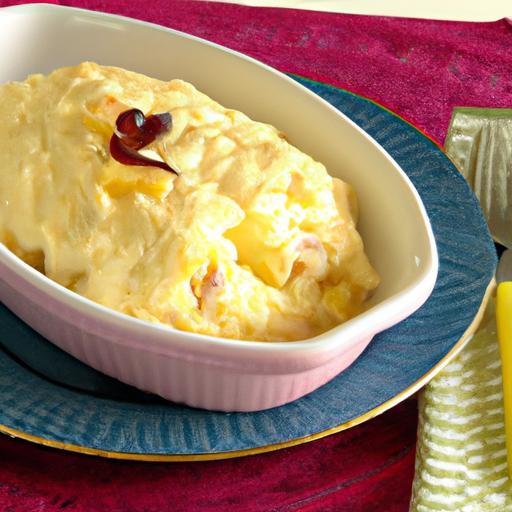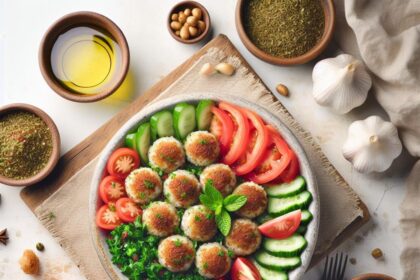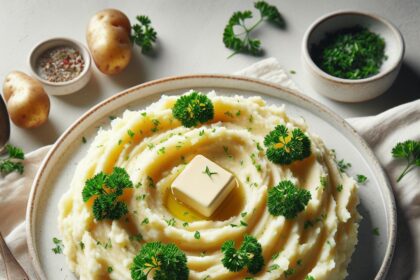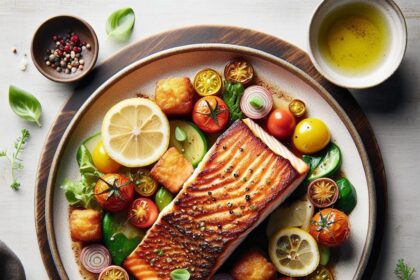Imagine this: a comforting casserole, rich with creamy layers and the subtle tang of mayonnaise, crafted with care on a busy weeknight. But what if you could make that magic ahead of time, freeze it, and have a wholesome meal ready whenever hunger strikes? Freezing casseroles containing mayonnaise might raise questions-will the texture hold, is it safe to freeze mayo-based dishes, and how can you ensure delicious results every time? In this article, we’ll uncover the secrets behind freezing casseroles with mayonnaise, blending food science with practical tips to help you freeze, thaw, and savor your favorite creamy creations without a hitch. Let’s dive in and transform your meal prep game!
Freezing Casseroles with Mayonnaise: Safety and Tips Uncovered
Freezing casseroles with mayonnaise can be a game-changer for meal planning and busy weeknights. While mayonnaise might seem delicate, understanding its role in casserole freezing safety helps you create dishes that maintain their creamy texture and rich flavor after thawing. This guide dives deep into best practices for preparing, freezing, thawing, and reheating mayonnaise-based casseroles so you can confidently batch-cook and enjoy delicious meals anytime.
Prep and Cook Time
- Preparation: 25 minutes
- Cooking: 35 minutes
- Cooling before freezing: 1 hour
Yield
6 servings
Difficulty Level
Medium
Ingredients
- 2 cups cooked chicken, shredded
- 1 cup mayonnaise (preferably full-fat for best texture retention)
- 1 cup shredded sharp cheddar cheese
- 1 cup frozen mixed vegetables (thawed and drained)
- 1/2 cup diced onions
- 1/2 cup sour cream
- 1 teaspoon garlic powder
- 1 teaspoon dried thyme
- Salt and freshly ground black pepper, to taste
- 2 cups cooked rice or pasta
- 1/2 cup crushed buttery crackers or panko (for topping)
- 2 tablespoons melted butter (to mix with topping)
Instructions
- Preheat your oven to 350°F (175°C) and grease a 9×13-inch casserole dish.
- In a large bowl, combine the shredded chicken, cooked rice or pasta, thawed vegetables, diced onions, garlic powder, thyme, salt, and pepper. Mix thoroughly.
- Blend in the Mayonnaise and sour cream, stirring gently to create a creamy mixture that will hold together in the freezer without breaking down.
- Fold in 3/4 cup of shredded cheddar cheese until evenly distributed.
- Transfer the mixture into the prepared casserole dish and spread evenly.
- Mix the remaining cheese with melted butter and crushed crackers, then sprinkle evenly over the top to achieve a golden, crispy crust after baking.
- Bake uncovered for 30-35 minutes or until heated through and the topping turns golden brown.
- Cool the casserole at room temperature for 1 hour, then wrap tightly with plastic wrap and aluminum foil before placing it in the freezer.
Chef’s Notes and Tips for Success
- For best freezing safety, use full-fat mayonnaise. Low-fat versions can separate upon freezing and thawing.
- Cool casseroles completely before freezing to prevent ice crystals, which degrade texture and flavor.
- Seal tightly with both plastic wrap and foil to protect from freezer burn and unwanted odors.
- When ready to eat, thaw overnight in the refrigerator to maintain safety and texture.
- Reheat gently in the oven at 325°F (160°C) for 25-30 minutes, loosely covered to keep moisture inside while preventing drying.
- Feel free to swap chicken with turkey or vegetarian protein alternatives for variety.
Serving Suggestions
Serve your reheated casserole with a fresh side salad drizzled with a lemon vinaigrette or steamed green beans for a balanced meal. Garnish with freshly chopped parsley or chives to brighten the creamy layers. A light squeeze of fresh lemon juice just before serving adds a lovely contrast that enhances the richness imparted by the mayonnaise.
| Nutrient | Per Serving |
|---|---|
| Calories | 420 kcal |
| Protein | 32 g |
| Carbohydrates | 18 g |
| Fat | 24 g |

Best Practices for Preparing Mayonnaise-Based Casseroles for the Freezer
When mastering the art of freezing casseroles with mayonnaise, it’s vital to maintain food safety and texture integrity. Mayonnaise’s high-fat content helps maintain moisture, but improper preparation can lead to a watery or separated casserole post-thaw. Use full-fat mayo and avoid over-soaking ingredients beforehand. Ensure even mixing for consistent flavor and texture.
Thawing and Reheating Tips to Maintain Flavor and Texture
Thaw your casserole slowly in the refrigerator-this gradual temperature change minimizes bacteria growth and helps ingredients regain their original consistency. Reheat slowly covered to prevent drying out, stirring gently midway if possible. Avoid microwave reheating as it can cause uneven warming and separation of mayonnaise.
Common Mistakes to Avoid When Freezing Mayonnaise Casseroles
- Freezing while still hot or warm, which traps moisture and encourages ice crystals.
- Using low-fat mayonnaise that breaks down during freezing and reheating.
- Skipping airtight wrapping, leading to freezer burn.
- Not thawing properly before reheating, which affects texture and safety.
For further expertise on freezing techniques and food safety, visit USDA Food Safety and Inspection Service.
Explore more recipes and freezing tips in our Comprehensive Guide to Freezing Leftovers.
Q&A
Q&A: Freezing Casseroles with Mayonnaise – Safety and Tips Uncovered
Q1: Can you safely freeze casseroles that contain mayonnaise?
A1: Yes, you can freeze casseroles that include mayonnaise, but with some caveats. Mayonnaise is an emulsion of oil, egg yolk, and vinegar or lemon juice, and freezing can sometimes cause it to separate, changing the texture. However, when baked into a casserole, the mayo is usually well-incorporated into the dish, making freezing safer and less likely to affect flavor or consistency drastically.
Q2: Does freezing casseroles with mayonnaise affect their taste or texture?
A2: Freezing can slightly alter the texture of a mayonnaise-based casserole, often making it a bit less creamy once thawed. The flavors generally remain intact, but if the mayo was added on top or swirled in after cooking, it might separate more noticeably. Baking the casserole before freezing helps meld the mayo into the ingredients, preserving taste and texture better.
Q3: What’s the best way to freeze a casserole with mayonnaise?
A3: The ideal method is to bake the casserole completely, let it cool to room temperature, then wrap it tightly in plastic wrap and aluminum foil or place it in an airtight freezer-safe container. This minimizes freezer burn and keeps moisture in. Avoid freezing uncooked casseroles with mayonnaise, as the emulsion is more likely to break down.
Q4: How long can casseroles containing mayonnaise be safely frozen?
A4: For optimal quality, consume frozen casseroles with mayonnaise within 2 to 3 months. While they remain safe beyond this period if kept constantly frozen, the taste and texture might deteriorate over time, particularly due to the mayo content.
Q5: How should I thaw and reheat a frozen mayonnaise casserole?
A5: Thaw the casserole overnight in the refrigerator to keep it at a safe temperature. Reheat thoroughly in the oven at around 350°F (175°C) until it’s hot all the way through, usually 20-30 minutes depending on size. Avoid microwaving if you want to maintain original texture, as it can cause separation or sogginess.
Q6: Can I add mayonnaise to a casserole after freezing or thawing?
A6: It’s best to add mayonnaise before baking and freezing. Adding mayo after thawing can be risky because the cold temperature can cause the mayo to separate and produce a runny texture. If you want a creamy topping post-freezing, opt for a fresh drizzle or a dollop just before serving instead.
Q7: Any final tips for freezing casseroles with mayonnaise?
A7: Absolutely! Make sure to cool the casserole fully before freezing to prevent ice crystals. Label and date your casserole for easy rotation. When in doubt, bake before freezing and keep mayo well blended into the dish for the best taste and safety. Remember, safety first-always thaw in the fridge, not at room temperature!
To Conclude
In the chilly world of frozen casseroles, mayonnaise might seem like an unexpected companion, but with the right knowledge, it can become a trusted ally in your kitchen. By understanding the science behind freezing mayo-based dishes and following practical safety tips, you unlock the door to convenient, flavorful meals that stand the test of time – and temperature. So, next time you’re preparing a casserole, don’t shy away from that creamy binder; freeze with confidence, and let your culinary creativity chill and thaw on your schedule. After all, mastering this frosty technique means fewer meals to cook and more moments to savor.








